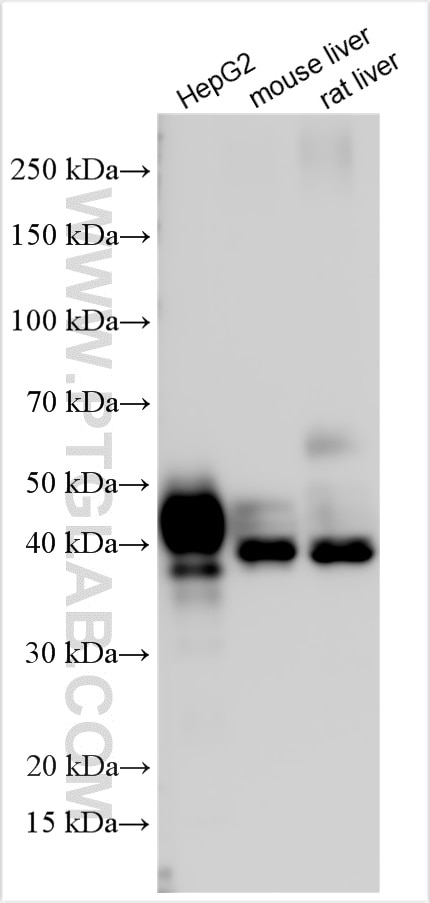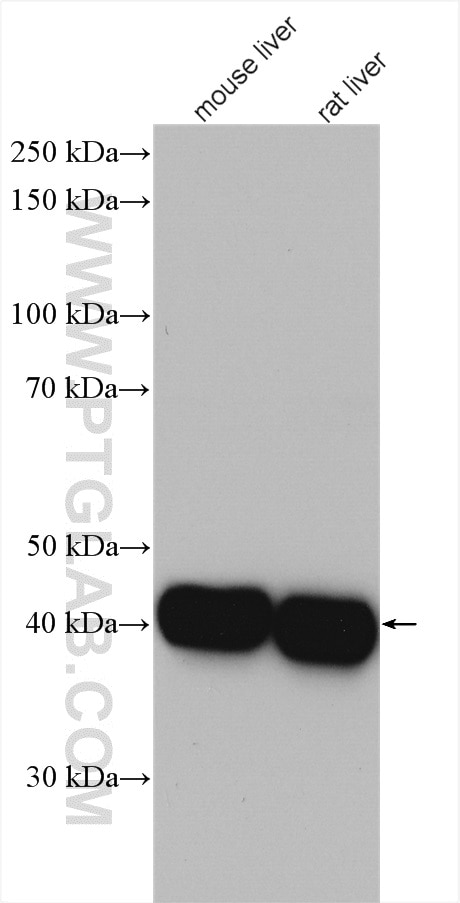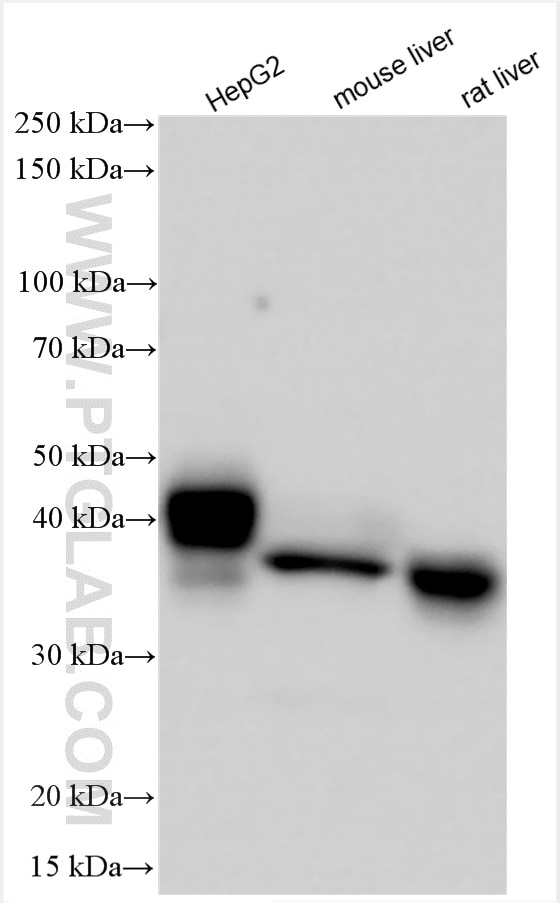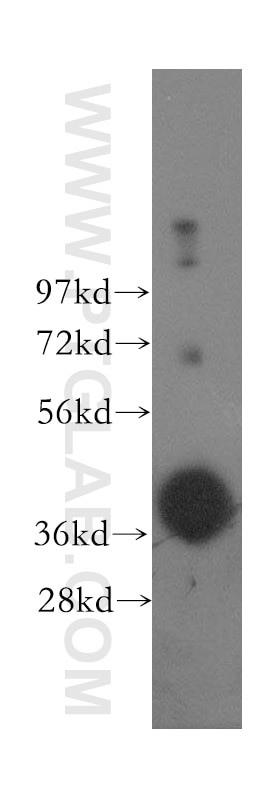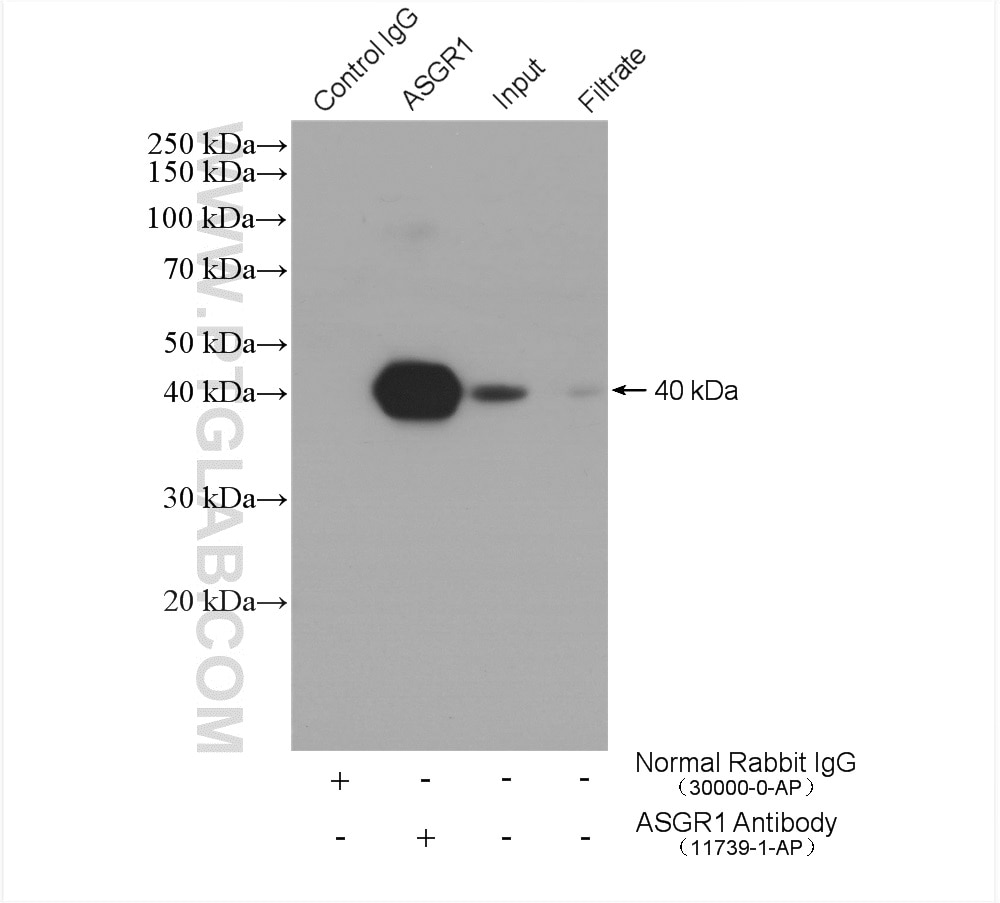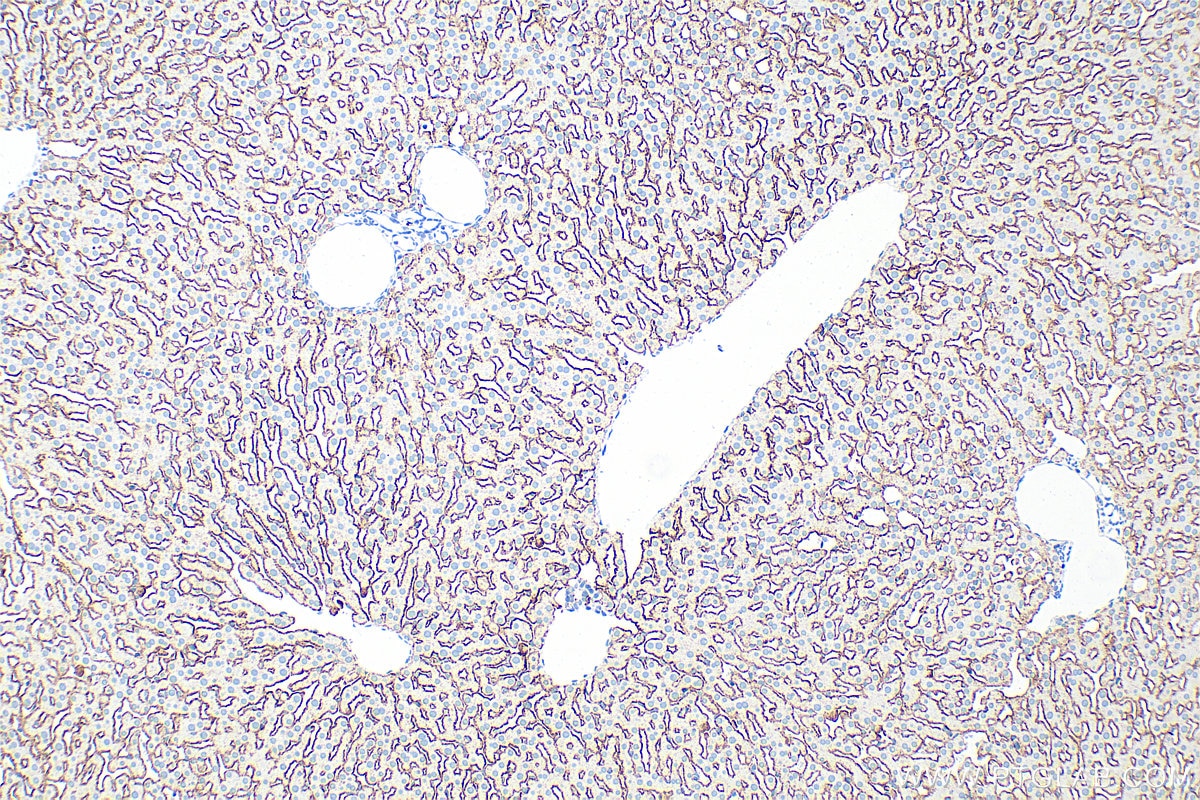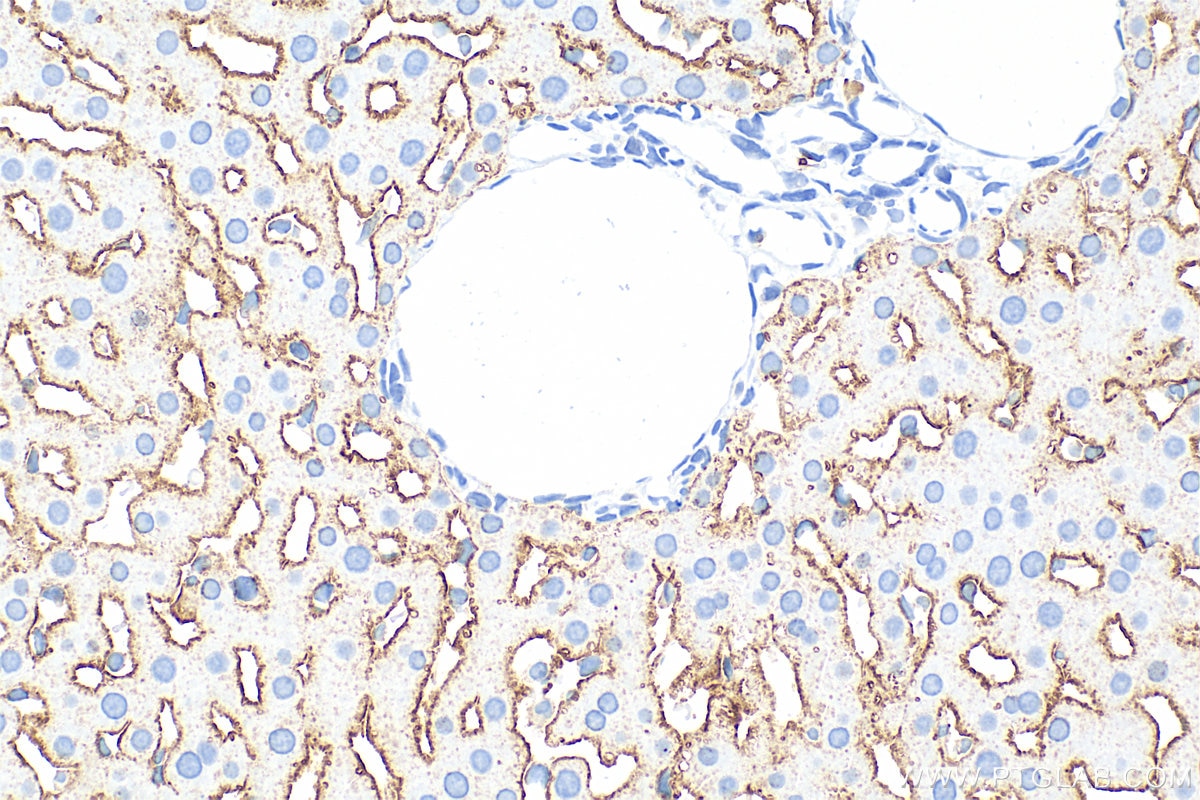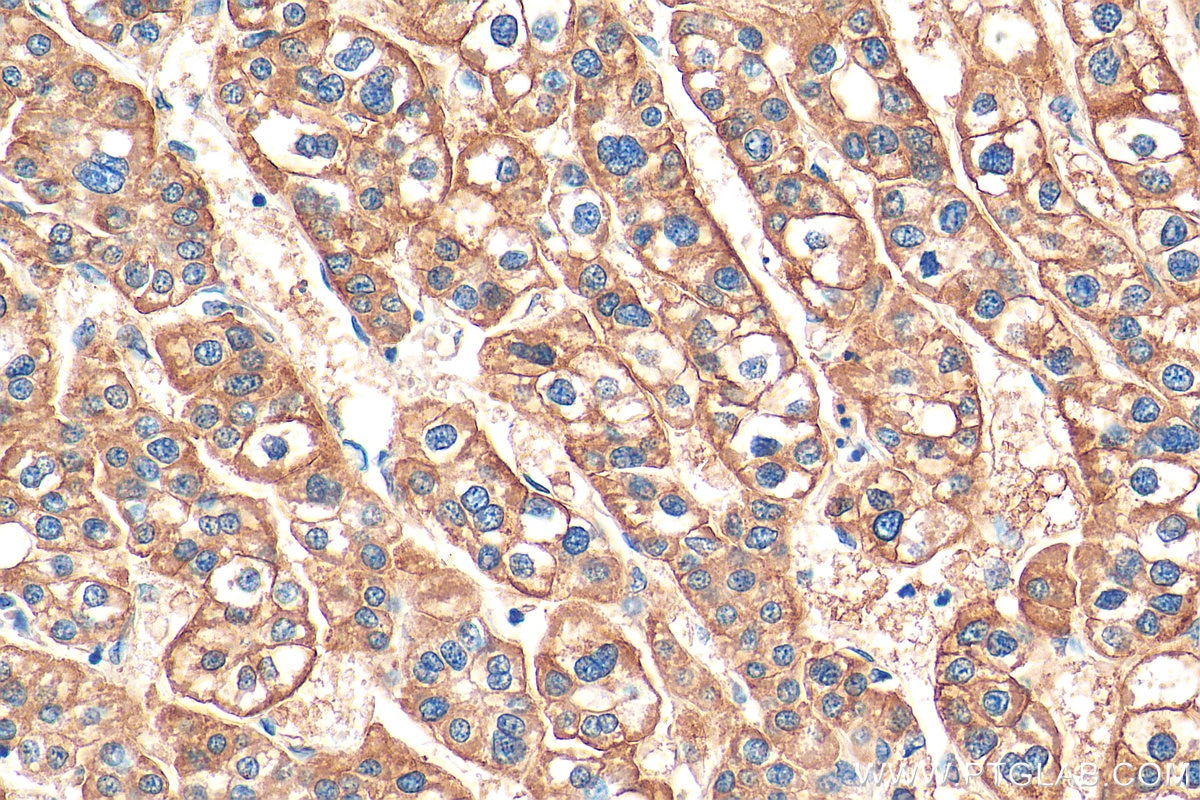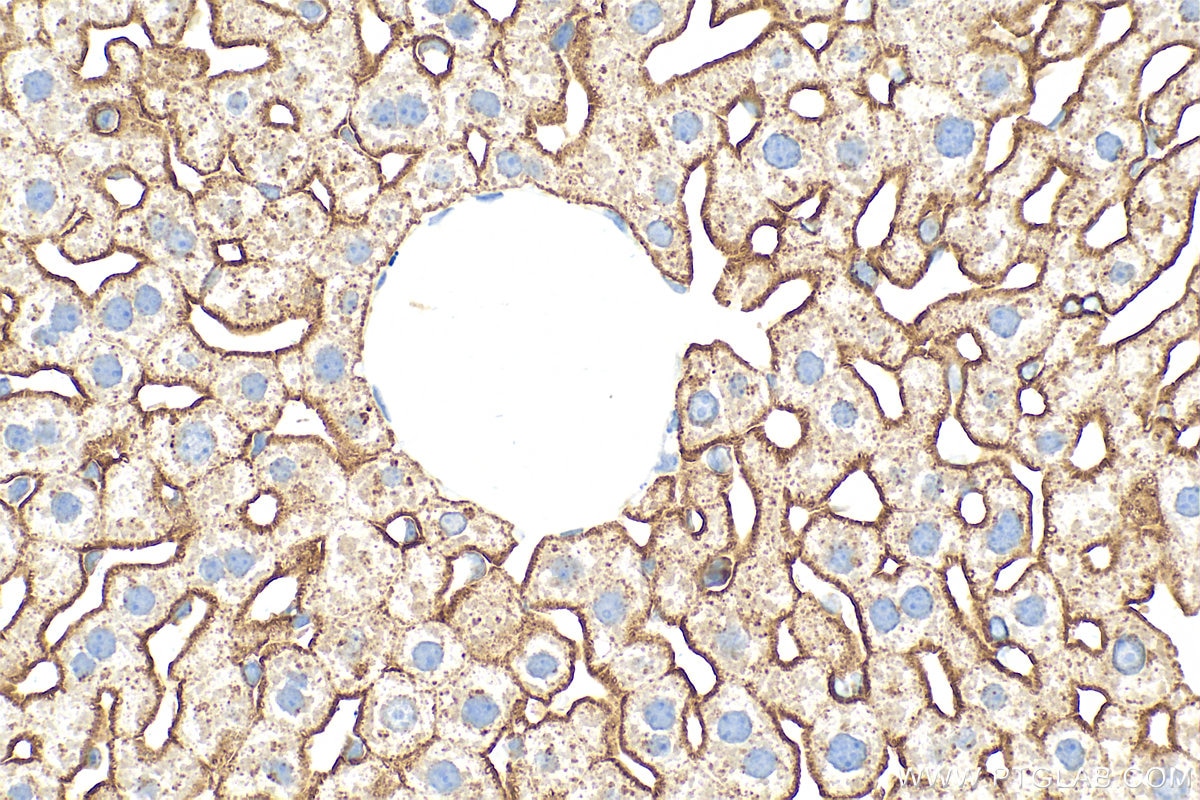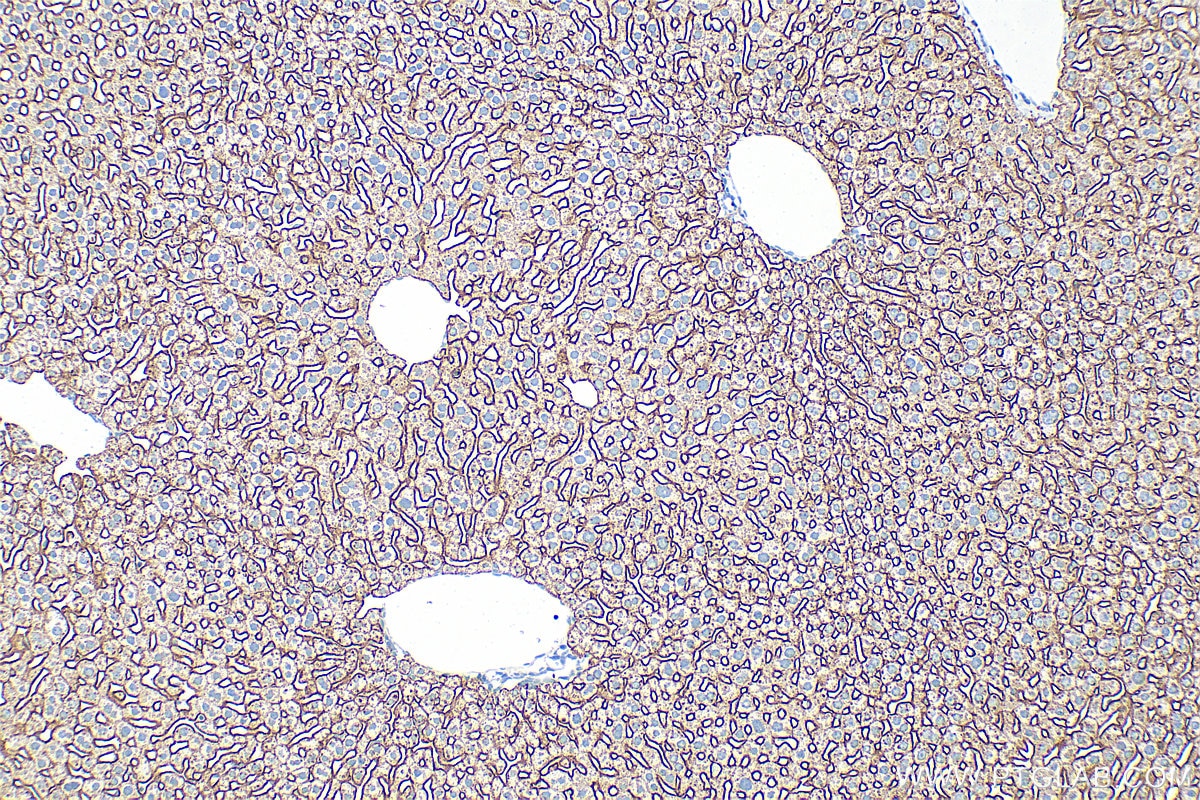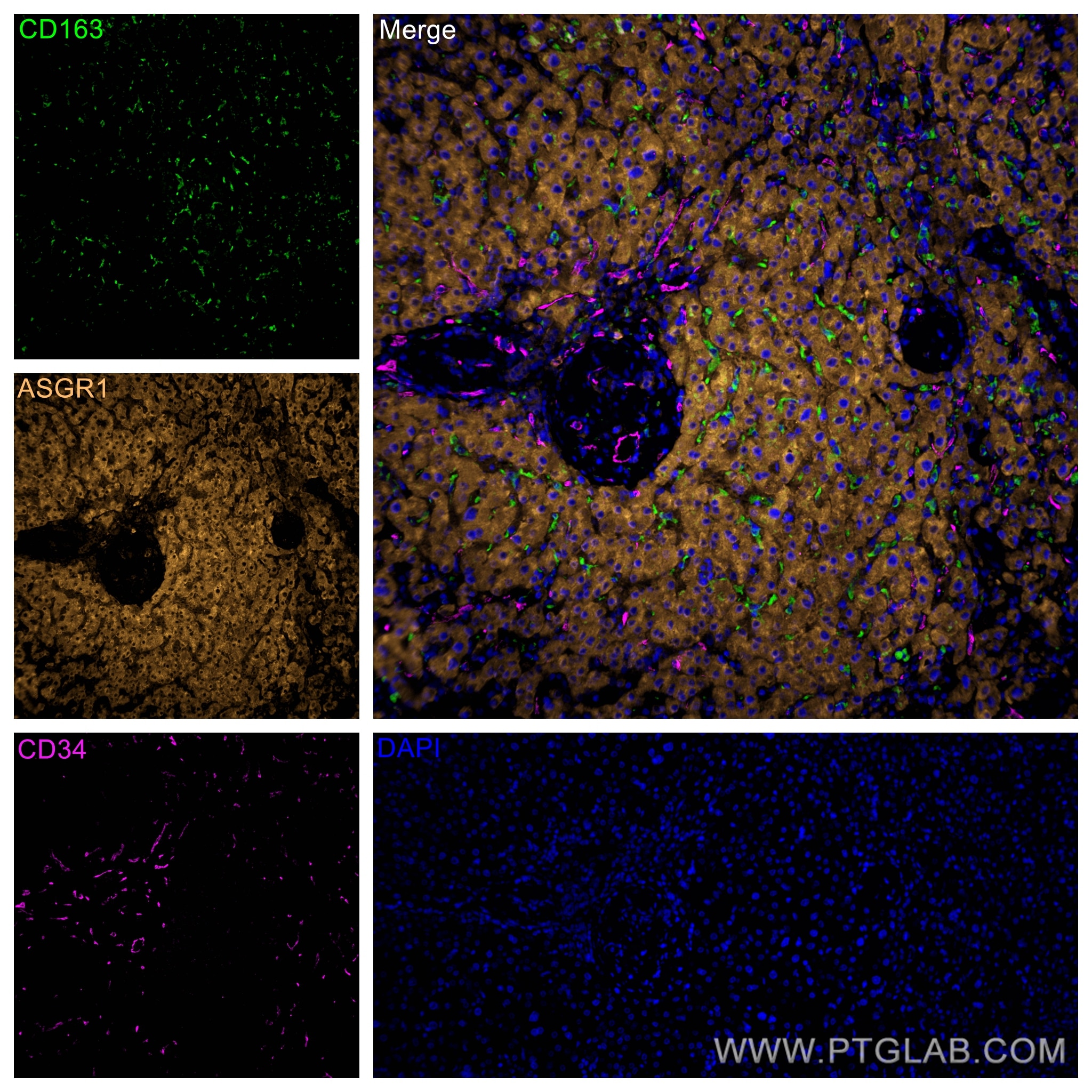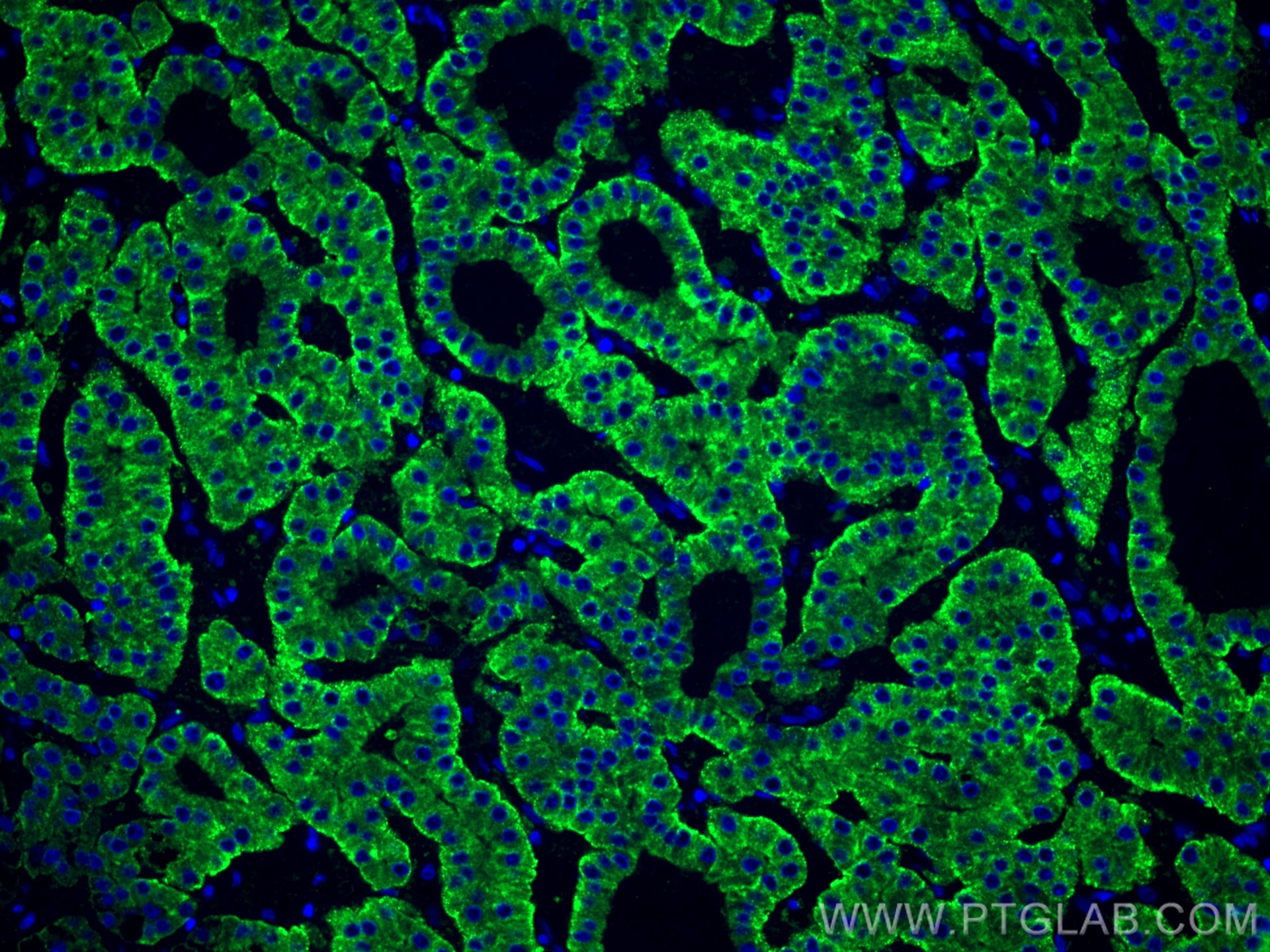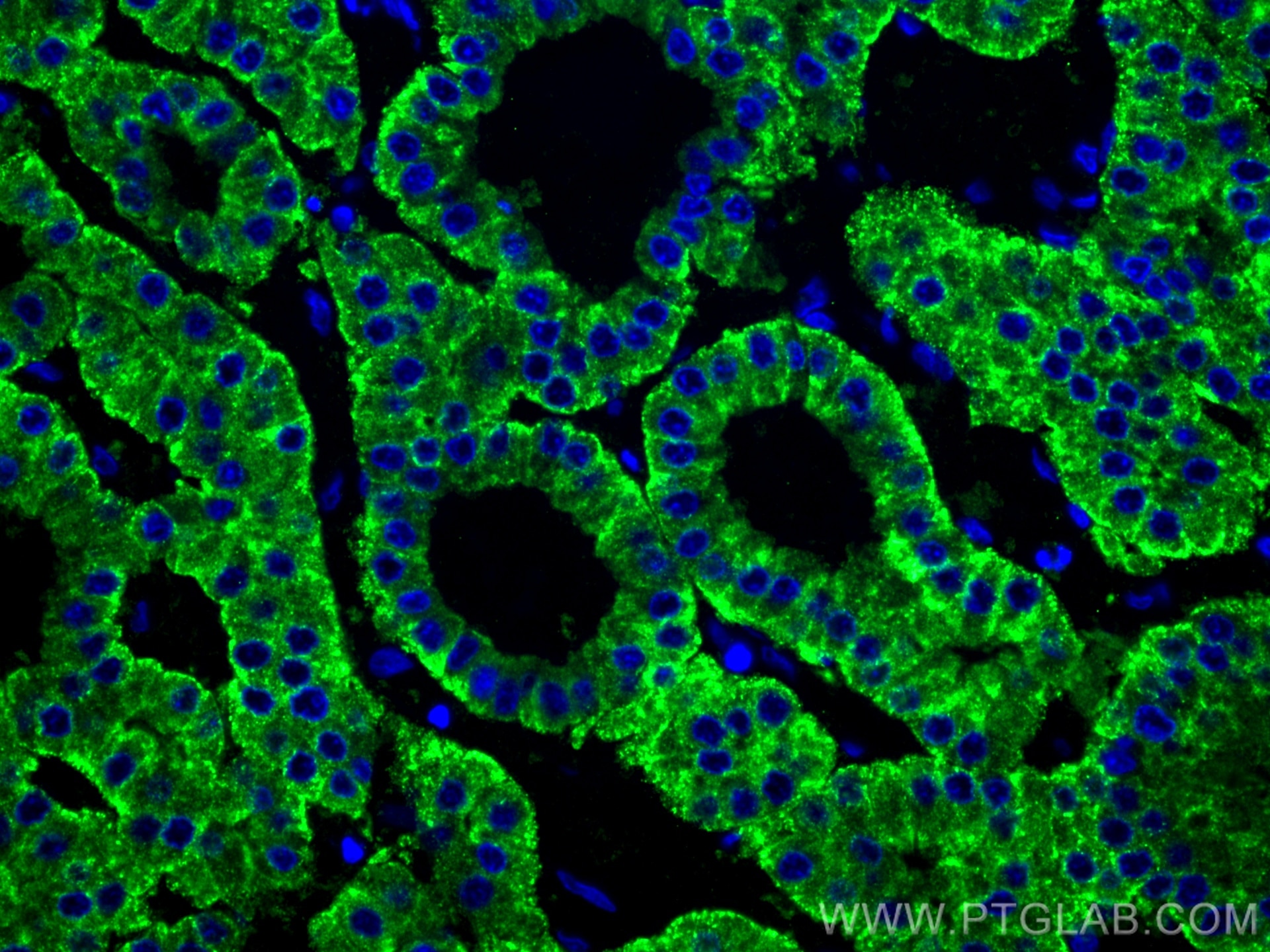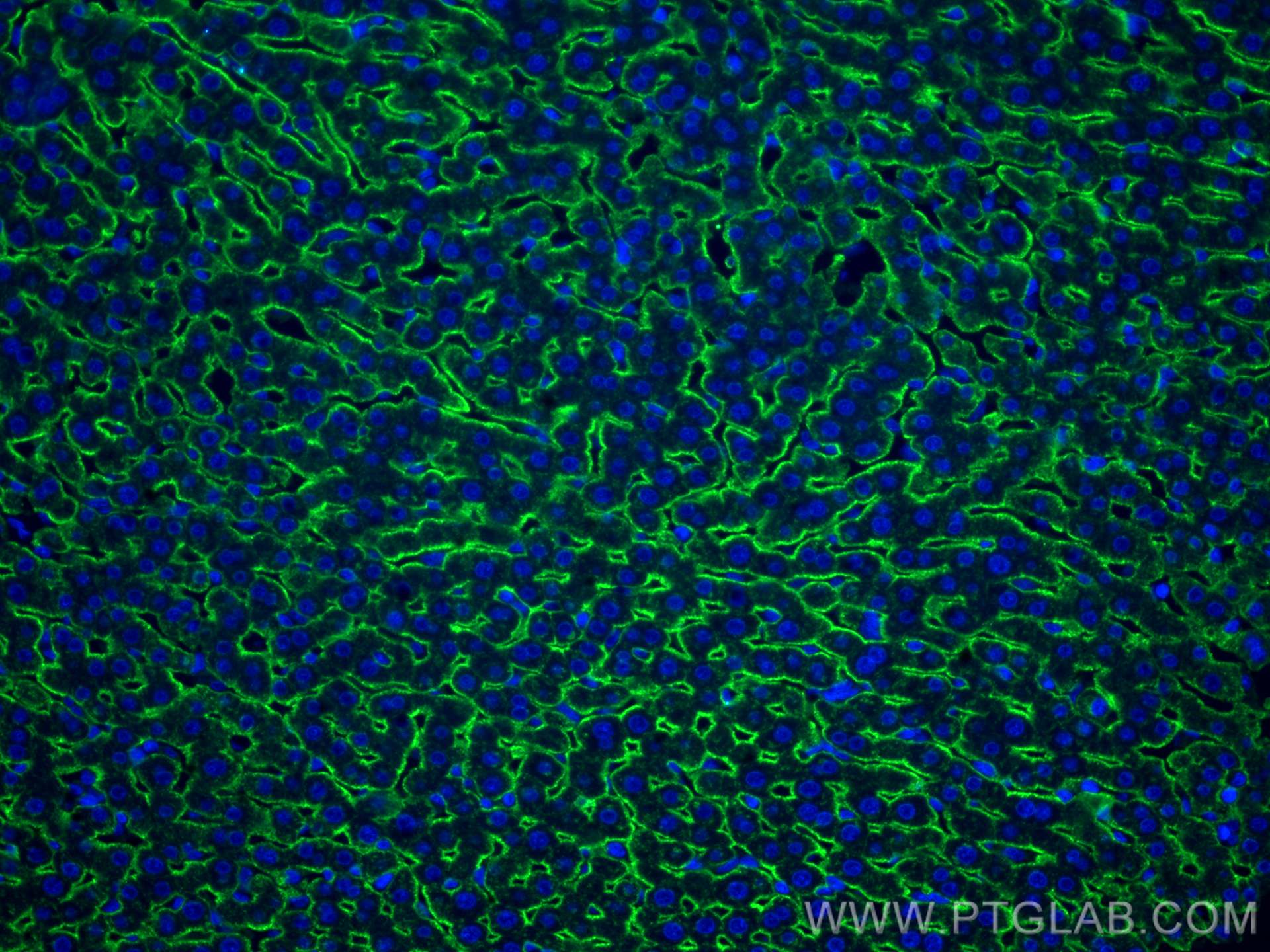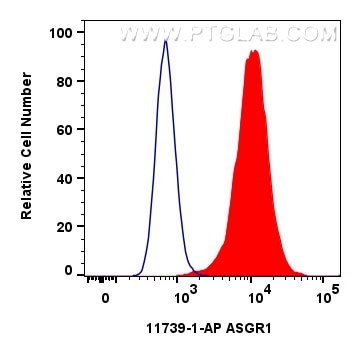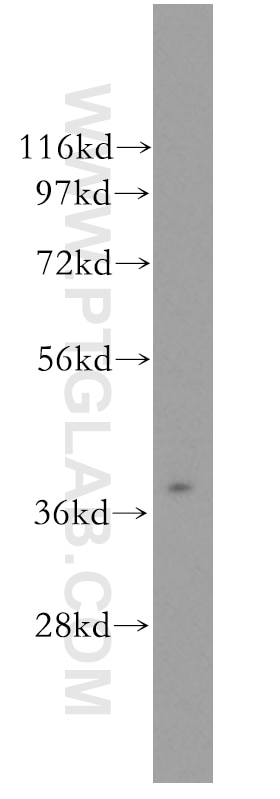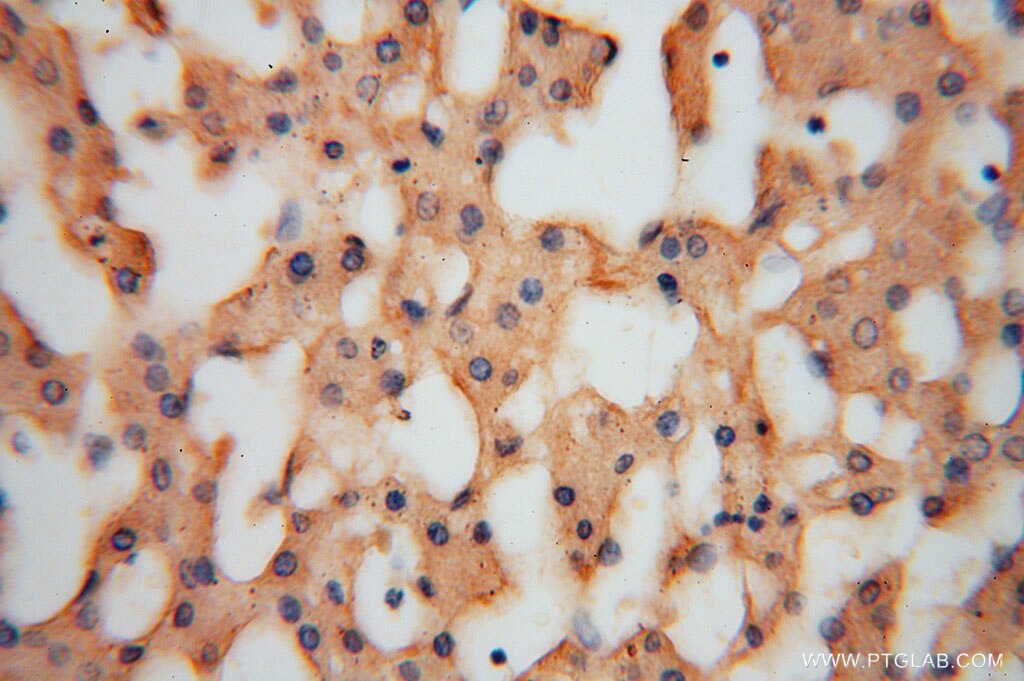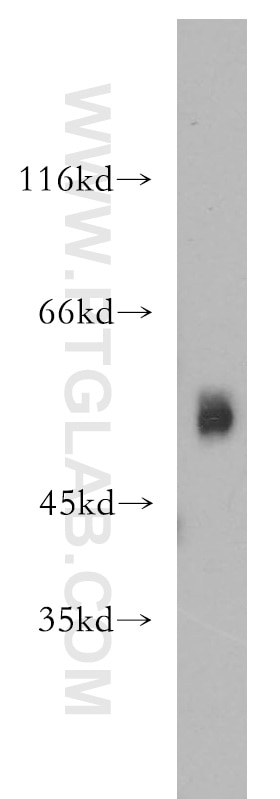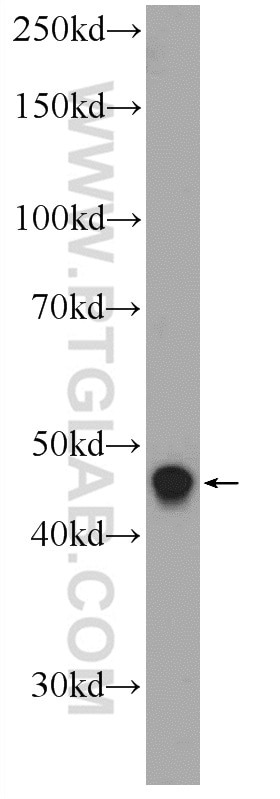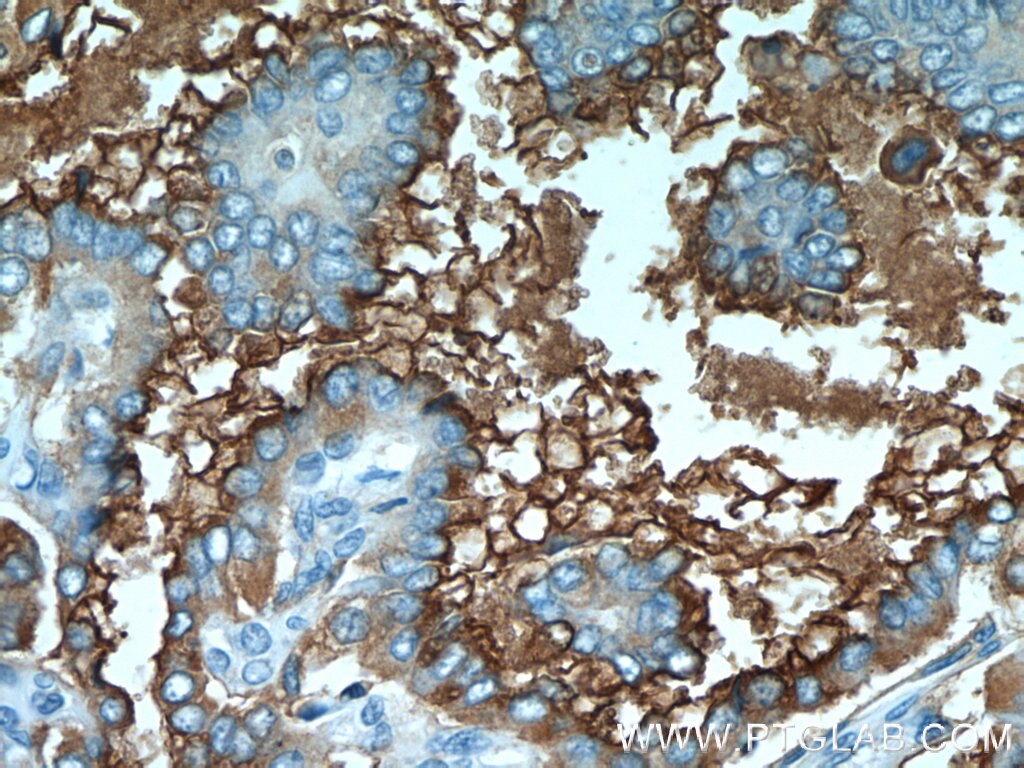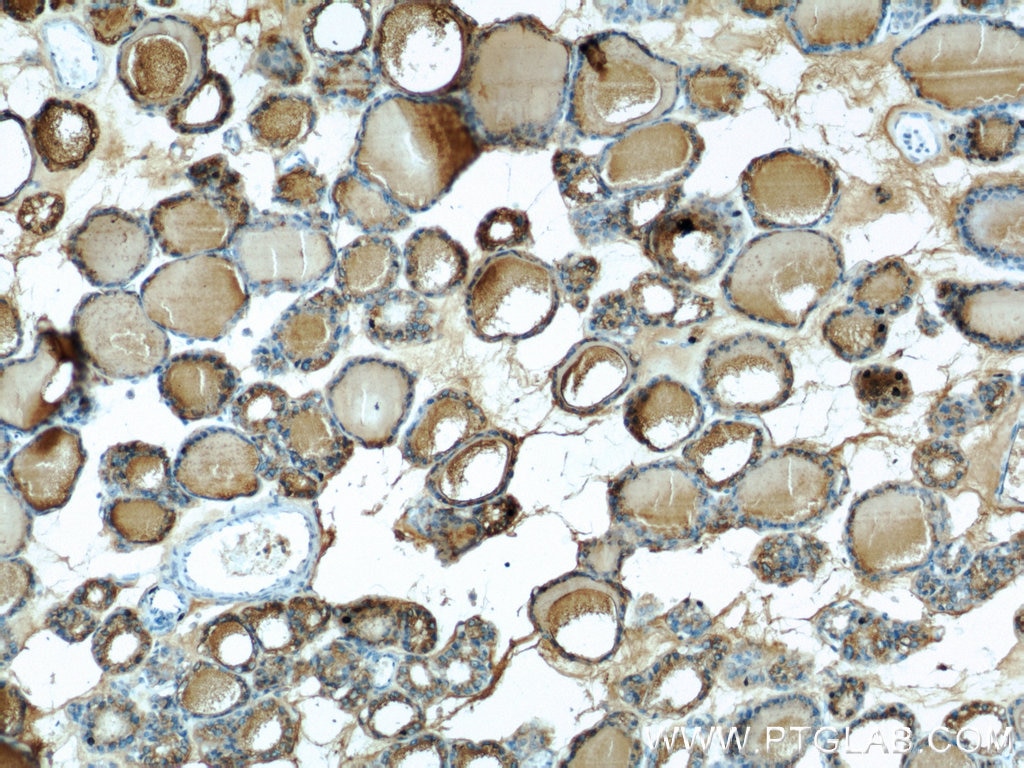- Featured Product
- KD/KO Validated
ASGR1 Polyklonaler Antikörper
ASGR1 Polyklonal Antikörper für WB, IHC, IF-P, FC, IP, ELISA
Wirt / Isotyp
Kaninchen / IgG
Getestete Reaktivität
human, Maus, Ratte und mehr (1)
Anwendung
WB, IHC, IF-P, FC, IP, CoIP, ELISA, Blocking assay
Konjugation
Unkonjugiert
Kat-Nr. : 11739-1-AP
Synonyme
Galerie der Validierungsdaten
Geprüfte Anwendungen
| Erfolgreiche Detektion in WB | HepG2-Zellen, humanes Lebergewebe, Mauslebergewebe, Rattenlebergewebe |
| Erfolgreiche IP | Mauslebergewebe |
| Erfolgreiche Detektion in IHC | Rattenlebergewebe, humanes Leberkarzinomgewebe, Mauslebergewebe Hinweis: Antigendemaskierung mit TE-Puffer pH 9,0 empfohlen. (*) Wahlweise kann die Antigendemaskierung auch mit Citratpuffer pH 6,0 erfolgen. |
| Erfolgreiche Detektion in IF-P | humanes Leberkarzinomgewebe, humanes Lebergewebe, Rattenlebergewebe |
| Erfolgreiche Detektion in FC | HepG2-Zellen |
Empfohlene Verdünnung
| Anwendung | Verdünnung |
|---|---|
| Western Blot (WB) | WB : 1:5000-1:50000 |
| Immunpräzipitation (IP) | IP : 0.5-4.0 ug for 1.0-3.0 mg of total protein lysate |
| Immunhistochemie (IHC) | IHC : 1:1000-1:4000 |
| Immunfluoreszenz (IF)-P | IF-P : 1:50-1:500 |
| Durchflusszytometrie (FC) | FC : 0.40 ug per 10^6 cells in a 100 µl suspension |
| It is recommended that this reagent should be titrated in each testing system to obtain optimal results. | |
| Sample-dependent, check data in validation data gallery | |
Veröffentlichte Anwendungen
| KD/KO | See 3 publications below |
| WB | See 11 publications below |
| IHC | See 2 publications below |
| IF | See 5 publications below |
| FC | See 4 publications below |
| CoIP | See 1 publications below |
Produktinformation
11739-1-AP bindet in WB, IHC, IF-P, FC, IP, CoIP, ELISA, Blocking assay ASGR1 und zeigt Reaktivität mit human, Maus, Ratten
| Getestete Reaktivität | human, Maus, Ratte |
| In Publikationen genannte Reaktivität | human, Hausschwein, Maus |
| Wirt / Isotyp | Kaninchen / IgG |
| Klonalität | Polyklonal |
| Typ | Antikörper |
| Immunogen | ASGR1 fusion protein Ag2310 |
| Vollständiger Name | asialoglycoprotein receptor 1 |
| Berechnetes Molekulargewicht | 291 aa, 33 kDa |
| Beobachtetes Molekulargewicht | 38-42 kDa |
| GenBank-Zugangsnummer | BC032130 |
| Gene symbol | ASGR1 |
| Gene ID (NCBI) | 432 |
| Konjugation | Unkonjugiert |
| Form | Liquid |
| Reinigungsmethode | Antigen-Affinitätsreinigung |
| Lagerungspuffer | PBS mit 0.02% Natriumazid und 50% Glycerin pH 7.3. |
| Lagerungsbedingungen | Bei -20°C lagern. Nach dem Versand ein Jahr lang stabil Aliquotieren ist bei -20oC Lagerung nicht notwendig. 20ul Größen enthalten 0,1% BSA. |
Hintergrundinformationen
Asialoglycoprotein receptor (ASGPR), also known as the hepatic galactose/N-acetylglucosamine (GlcNAc) receptor or Ashwell receptor, is a C-type lectin expressed exclusively in hepatic parenchymal cells. ASGPR consists of two subunits, a major subunit (ASGR1, HL-1) and a minor subunit (ASGR2, HL-2), and specifically recognizes terminal β-linked galactose or GlcNAc on circulating glycoproteins or cells. This receptor plays a critical role in serum glycoprotein homeostasis by mediating the endocytosis and lysosomal degradation of glycoproteins that contain terminal galactose or GlcNAc residues. ASGPR may facilitate hepatic infection by multiple viruses including hepatitis B, and is also a target for liver-specific drug delivery.
Protokolle
| Produktspezifische Protokolle | |
|---|---|
| WB protocol for ASGR1 antibody 11739-1-AP | Protokoll herunterladen |
| IHC protocol for ASGR1 antibody 11739-1-AP | Protokoll herunterladen |
| IF protocol for ASGR1 antibody 11739-1-AP | Protokoll herunterladen |
| IP protocol for ASGR1 antibody 11739-1-AP | Protokoll herunterladen |
| FC protocol for ASGR1 antibody 11739-1-AP | Protokoll herunterladen |
| Standard-Protokolle | |
|---|---|
| Klicken Sie hier, um unsere Standardprotokolle anzuzeigen |
Publikationen
| Species | Application | Title |
|---|---|---|
Nano Lett A Potent Branched-Tail Lipid Nanoparticle Enables Multiplexed mRNA Delivery and Gene Editing In Vivo. | ||
Acta Biomater Modeling nonalcoholic fatty liver disease on a liver lobule chip with dual blood supply. | ||
Biomaterials Dual targeted delivery of statins and nucleic acids by chitosan-based nanoparticles for enhanced antiatherosclerotic efficacy. | ||
Cancer Res ASO-Based PKM Splice-Switching Therapy Inhibits Hepatocellular Carcinoma Growth. | ||
Mol Ther Enhanced Potency of GalNAc-Conjugated Antisense Oligonucleotides in Hepatocellular Cancer Models. |
Rezensionen
The reviews below have been submitted by verified Proteintech customers who received an incentive for providing their feedback.
FH Kamal (Verified Customer) (02-15-2024) | Mouse liver lysates were subjected to SDS PAGE followed by western blot with 11739-1-AP (ASGR1 antibody) at dilution of 1:25000 incubated at 4 degree C overnight. ASGR1 bands appeared at about 42 kDa.
|
FH Kamal (Verified Customer) (02-15-2024) | Mouse liver lysates were subjected to SDS PAGE followed by western blot with 11739-1-AP (ASGR1 antibody) at dilution of 1:25000 incubated at 4 degree C overnight. ASGR1 bands appeared at about 42 kDa.
|
FH James (Verified Customer) (11-18-2022) | Very good antibody! Used it to label hepatocytes in section of paraffin-embedded liver tissue
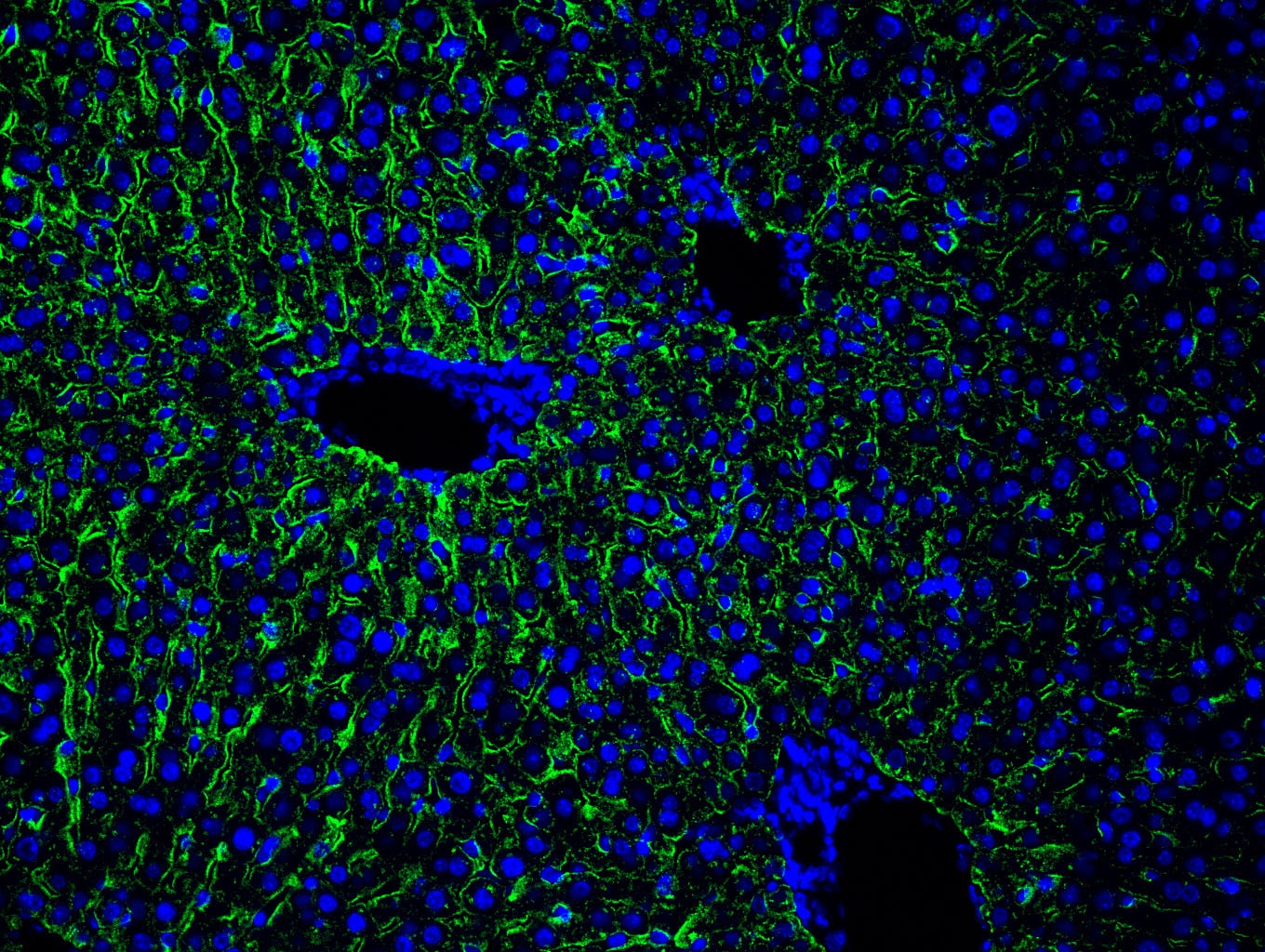 |
